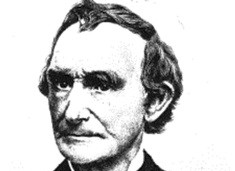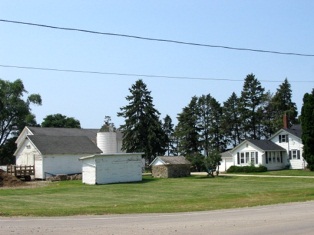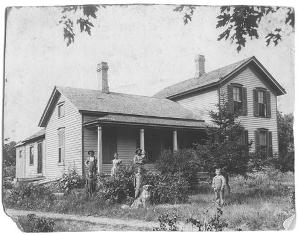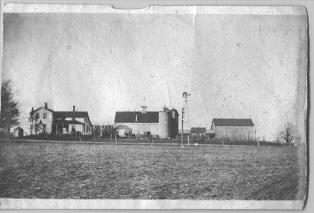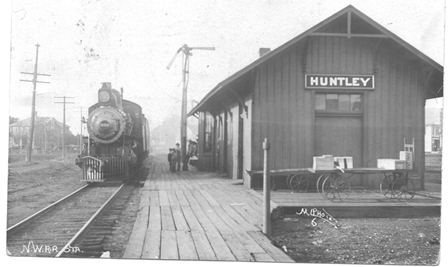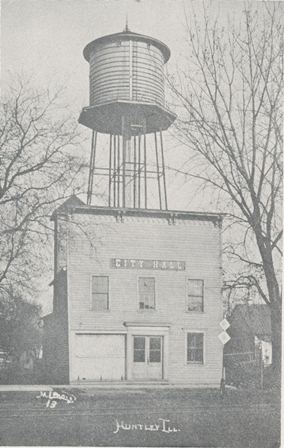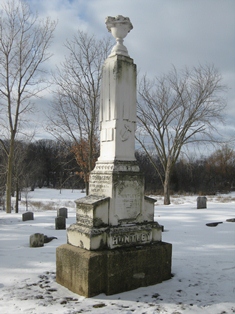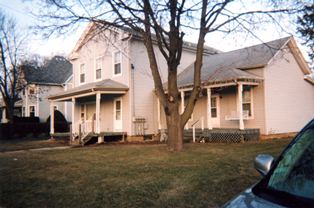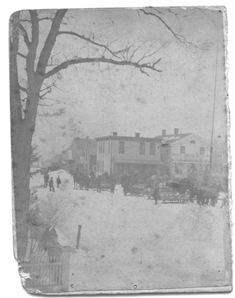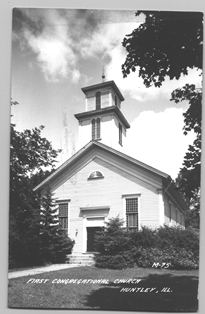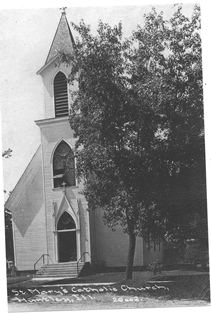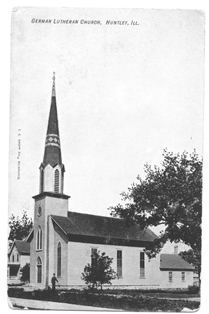People, places and important dates in the early development of the Village of Huntley, IL.
Grafton Township
The terms at the conclusion of the Black Hawk War of 1834 required Native Americans to vacate their land and to move west of the Mississippi River. White settlers began moving into northern Illinois following the war. The first local government, McHenry County, was formed in 1834. The Illinois constitution of 1848 gave voters in each county the opportunity to adopt Township Government. Grafton Township, named for early setter Prescott Whittemore’s former hometown, was organized in 1849 with a slate of officers which included Whittemore as Overseer of the Poor and Thomas Huntley as first Township Supervisor. Stewart Cummings was the first Township Clerk. Others elected to the board included William Chambers, Elisha Dayton and Sanford Haight as Commissioner of Highways. J. Hobert and J. Hoyt were elected Justices of the Peace and William Robb and W. Smith were named constables.
The Whittemore home and farm along Marengo Road just west of Huntley was the first in the township, dating to about 1838. Prescott and Lucy Geer Whittemore arrived with their 10 children and built the limestone house on the property. The stones were hauled by wagon from Garden Prairie. The Whittemore name is included in many Huntley “firsts.” The home was the first location of religious services and the first hotel or inn for those traveling to the west. Prescott Whittemore served on the first township board, named for his Grafton, New Hampshire birthplace.
The Guy and Eleanor Cummings homestead dates to about 1839. Their numerous children were involved in the growth of the Huntley community. Stewart Cummings was Huntley’s first postmaster and Grafton Township’s first clerk. Son John served as the village’s first president in 1872. The Cummings homestead, located along west Main Street, now belongs to the Huntley Park District.
Richard and Olive Crego Hadley settled on their land in 1841 on Dundee Road, where the Heritage subdivision is located. The farm had a neatly planted walnut grove which stood for 150 years.
Daniel and Johanna O’Neal Donahue settled on this land in 1848 after coming from Ireland to work on the Illinois-Michigan Canal. The farm was located on the corner of Route 47 and Kreutzer Road where Walmart stands today.
Deacon James Williams and his wife settled and built this farmstead in the early 1850s. He was of Welsh descent, as were many who settled along Harmony Road. He was a founder and member of the First Congregational Church of Huntley, organized in 1852.
Susannah and Nelson Marsh settled on this land in 1853. Their first home was a long cabin, and this frame house was built in 1886. Their descendants are still occupying and operating the farm.
John Kreutzer purchased the homestead farm on July 12, 1868 and brought his four sons, Paul, John II, Frank and George to the area. Eventually, each of the sons had a farm of their own within a three-mile radius of the original homestead. Two of the farms, along Kreutzer Road, remain in the Kreutzer family more than 140 years later.
This scene depicts an early Huntley train and depot. Note the boards covering the depot platform. The first train came through to Huntley in September of 1851 and was the impetus for the growth of the village. The early trains carried milk and other farm products to Chicago. Passenger service included east and west-bound trains between Rockford and Chicago. Soldiers returning from the Civil War would travel to Crystal Lake, then walk to Huntley and board a west-bound train for Rockford and points west.
The first commercial development in Huntley centered east of the railroad and depot. Thomas Huntley built a house there which was used as a dry goods store. Michael Kelley had a tailor shop, Smith and Oakley operated a livery stable, and, over the years, a number of businessmen operated a hotel on that street. Their names are as follows: Byron Thornton (who later died in the Civil War); Ralph Long, H. B. Brown; Peter Ferris, George Sheler. The first Village Hall, shown here, was located on this street.
Thomas Huntley, the founding father of the community, was actively engaged in his farming endeavors and in organizing the beginnings of the town when sadly, the death of his 14-year-old son, William, in December of 1852, prompted a need for a village cemetery. Mr. Huntley donated land for the burial ground from the 80 acres he owned which surrounded the railroad tracks. The cemetery grounds, as it was called then, was located on the east side of Cemetery Street (now Dean Street) and later was enlarged to the west side of the street. It accommodated the deceased of all denominations until the Catholic Cemetery was established in 1882.
The first school in the town of Huntley was said to have been on Coral Street, west of Vine Street (Route 47) around 1842. Due to an increase in population, this building was constructed on Main Street where the 1875 brick school now stands. The two-story section of this building served as the second town school, with the lower level built in 1861 and the second story added in 1862 when enrollment again increased. The school served the village until the 1875 brick building was constructed. This building was moved around the corner and resettled on the east side of Church Street, where it now stands. The ell was added later. It may be one of the oldest buildings in Huntley.
John G. and Sarah Coyne Kelley settled in this home built for them on the north side of the town square before the Civil War. Mr. Kelley was a blacksmith and practiced his trade in a building to the east of the house where the 1939 former village hall now stands. The home is still owned by descendants of John and Sarah Kelley.
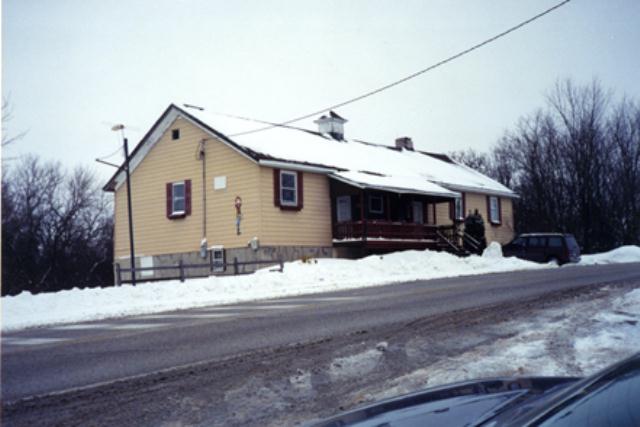
This frame building stood on Harmony Road near Route 20 until about 2000. It had been one of the earliest creameries in the area, having been built in the 1870s by Wood and Weltzien. It is an example of the creameries which dotted the rural area in the mid to late 1800s. The creameries predated the local milk factories, allowing farmers a convenient drop off spot for their milk. The earliest creamery in the Huntley area stood on the corner of Haligus and Conley roads. It was owned by Adonijah Blanchard and a Mr. Woodward. By 1866 it was being operated by Abner W. Nash. Nash produced cheese with subsequent owners Cummings and Haight and later with a Mr. Jackson and D. E. Wood. The latter partners owned three other creameries at the time in scattered locations around Huntley. In the days before milk was shipped to Chicago in large quantities, these creameries purchased raw milk to produce butter and cheese.
The oldest known photograph of the village center of Huntley dates to before 1876. The photo was taken along Main Street looking west toward Woodstock Street. The building on the left is one of the town’s earliest. It first was used as a hotel, then from 1881 to 1917 it was Devine and Steels General Store. Over the years it has been Otto Hart’s General Store, Sigrist Restaurant, a laundromat, a dentist office, a pharmacy, a religious goods store and a photography business. The building at right with the peaked roof, known at that time as the Wales building, was owned by Willard and Clara Cummings who sold it to John Hawley and his brother-in-law John G. Weltzien in 1878. The Wales building was moved and Hawley built a new building on the site. The building still stands today on the west end of the square and houses Luigi’s Pizza.
Huntley’s First Congregational Church was organized in 1852 by eight devout members, including Thomas Stillwell Huntley and Deacon James Williams. The church building was constructed in 1864 and now has the distinction of being the oldest church in continuous use in McHenry County.
St. Mary Catholic Church was organized in 1870 when a group of the faithful met in the John G. Kelley blacksmith shop to discuss establishing the congregation. In 1873 this frame church building was completed on Dean Street, next to the older section of the town cemetery, and Rev. Clement Duerr was appointed as the first pastor. In 1931 the first church was replaced with a brick structure on Woodstock Street and in 2001 a new St. Mary Church was dedicated on Dundee Road.
Trinity Evangelical Lutheran Church was organized March 1, 1871 as the German Evangelical Lutheran Church. Pastoral work had been carried out by pastors of other churches in the area before the church was formally organized. The first frame church, with a tall steeple and bell tower, was built in 1874 on the location where the newer brick church now stands. A father and son had served the congregation as pastors. Rev. John E. Baumgaertner was among the earliest pastors of the church, and his son, Rev. Louis Baumgaertner served from 1910 to 1947, longer than any other pastor

